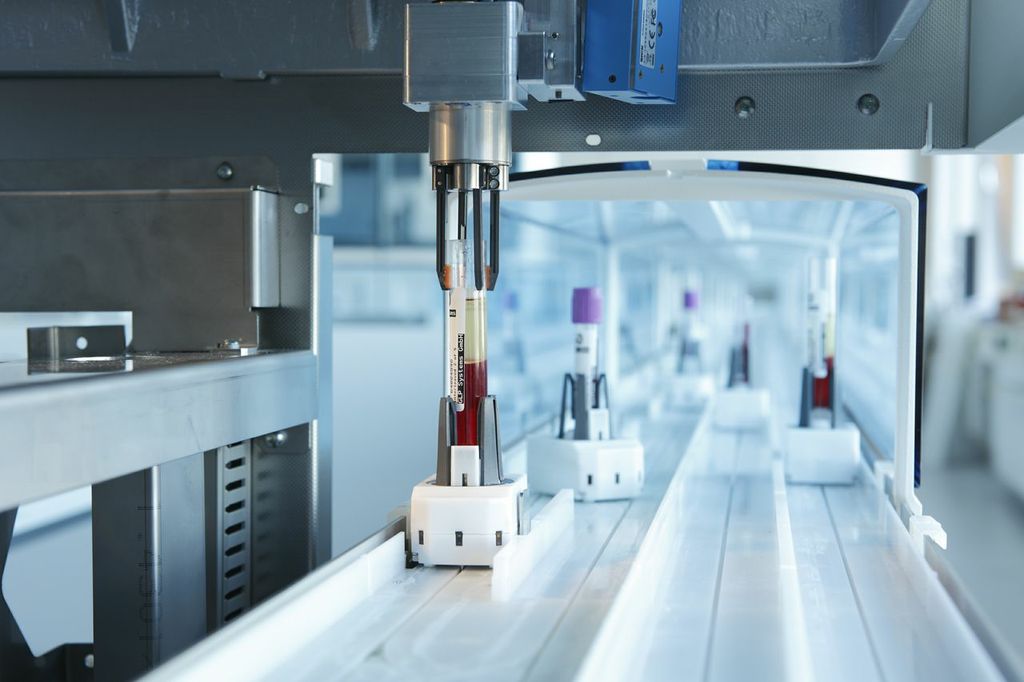Automated liquid handling systems have become an integral part of modern life sciences research and industrial processes dealing with liquids. From academic research laboratories to large biotechnology and pharmaceutical facilities, automated liquid handlers are helping accelerate scientific discovery and production needs by automating repetitive and labor-intensive liquid-based tasks. In this article, we will discuss the technology behind automated liquid handling systems, their various applications and advantages over manual pipetting.
How do automated liquid handlers work?
Automated liquid handlers use robots equipped with multi-channel pipettes to precisely dispense, transfer and mix liquids like reagents, samples and assays in microplates, tubes or other labware. At the core is their liquid handling “arm” which houses the pipette heads that can simultaneously aspirate and dispense different volumes of liquids. These robotic arms are programmed through software to follow specific protocols involving pipetting steps, incubation times and other parameters to automate complex liquid-based experiments or assays.
The pipette heads are usually made up of precision-engineered glass, plastic or metal with a disposable tip attached at the end. Sensors located inside the pipette and robot arm ensure accurate track liquid levels, air pressure and volumes for precise handling. Most advanced liquid handlers have the capability to dispense volumes ranging from nanoliters to milliliters and can process microplates, tubes and deep-well plates of varying sizes and densities in high-throughput workflows.
Applications in research and development
In research labs, Automated Liquid Handling Systems have enabled the miniaturization and parallelization of assays, tests and screening procedures. They are extensively used for genomic and proteomic research involving sample preparation, nucleic acid extractions, polymerase chain reaction setup, next-generation sequencing library preparation and more. Robotics has helped boost experimental throughput and significantly reduce manual errors and variability compared to manual pipetting.
Another major application area is drug discovery where automated liquid handlers are used for high-throughput screening (HTS) of compound libraries against biological targets. They allow rapidly evaluating thousands of chemical compounds for their effects in assay plates set up by the liquid handlers. Other R&D uses include routine cell culture tasks like media preparation, transfection array setup, serial dilutions for dose-response studies and automated plate washing all done at a larger volume and faster pace.
Streamlining industrialscale production
At an industrial scale in pharmaceutical manufacturing and clinical diagnostics, automated liquid handling has enabled round-the-clock production and processing of higher sample volumes. They ensure consistent dispensing of critical reagents, samples in assay kits and dispensed drugs in vials and ampoules at production speeds not possible through manual means. Advanced liquid handling platforms integrate multiple robotic arms, stackers and incubators to realize fully automated walk-away sample-to-result workflows for accelerated manufacturing and quality control testing needs.
Operations in regulated GMP and CLIA environments also benefit from the digitally recorded audit trails and proven precision of robotic liquid handling in maintaining product and process compliance. Overall, automated systems facilitate 24/7 unattended operation, minimize human error risks, accurately dispense lower volumes and improve manufacturing efficiency compared to labor-intensive manual methods.
Advantages of automation
There are several advantages automated liquid handlers provide over manual pipetting:
– Increased throughput: Automated systems allow simultaneously processing hundreds to thousands of samples per run versus a few samples manually at a time. This massively boosts overall lab and production throughput.
– Precision and accuracy: Liquid handlers ensure consistent volumes are dispensed or aspirated within tight specifications (±1-3%) essential for many assays and industrial processes. Manual pipetting is prone to greater inaccuracies.
– Walk-away capability: Once programmed, the robots can fully automate complex multi-step liquid transfer and mixing protocols with incubation periods without supervision for true walk-away automation.
– Minimized errors: Robotic systems virtually eliminate human errors from factors like repetitive stress injuries, sample-mixing mistakes and visual inaccuracies. This reduces variability and improves overall experimental reliability.
– Scalability: Automated solutions scale easily from research labs to industrial manufacturing by simply upgrading equipment or integrating additional modules to meet growing sample volumes and throughput needs.
– Documentation: Every pipetting step performed by liquid handlers is digitally recorded for traceability, compliance with regulatory needs, and to troubleshoot experiments when required.
Challenges and future trends
Of course, high initial investment, calibration and maintenance needs pose challenges for widespread adoption of automated liquid handling. Software and control interfaces also need continued improvement for greater ease-of-use. Emerging applications in areas like personalized medicine and liquid biopsies will also require liquid handlers to miniaturize further and achieve even higher density microfluidic processing beyond standard microplates.
New technologies like robotics-as-a-service models, multi-functional modular platforms, and fully-integrated sample-to-result workstations will help address these challenges. Advances in microwell arrays, high-speed imaging, and digital microfluidics are expanding the frontiers of liquid handling automation. With their proven capabilities, automated liquid handlers will continue playing a central role across life sciences and bioproduction in the future by turbocharging research discoveries and manufacturing productivity.
Automated liquid handling systems have revolutionized high-throughput experimentation in biomedical research and streamlined industrial bioprocessing over the last few decades. Their software-controlled precision pipetting and superior scalability compared to manual methods have greatly accelerated scientific workflows. Continued improvements in technology coupled with integrated workflow automation is ensuring these robotic solutions fulfill ever more complex liquid handling needs to further innovation. Automated liquid handlers are therefore integral laboratory tools propelling the life sciences forward.
*Note:
1. Source: Coherent Market Insights, Public sources, Desk research
2. We have leveraged AI tools to mine information and compile it

